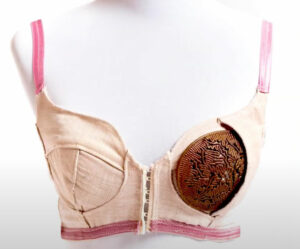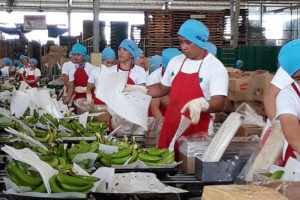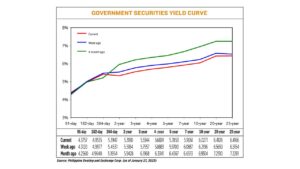New fiber products made with waste product, disliked plant

TWO new textile products were the focus during the Department of Science and Technology – Philippine Textile Research Institute (DoST-PTRI) Textile Stakeholder’s conference last Thursday at the Dusit Thani Hotel in Makati
Projects of the Department of Trade and Industry (DTI) Design Center of the Philippines, the two new textile products are important because the sources of the materials come from an overlooked resource and a maligned plant.
One of these is the bakong plant (Hanguana Malayana) which is found in Cagayan, but also in Mindoro, Palawan, and other places in the Philippines.
According to Maria Rita Matute, Executive Director of the Design Center of the Philippines, who discussed the aquatic plant, it is looked down upon by Cagayan citizens as an obstruction to tourism in their local lake. But in collaboration with the DOST, the Industrial Technology Development Institute (ITDI), and the Design Center of the Philippines tapped private sector collaborators to use fiber from the plant to make pulp, yarn, and, eventually, bioplastics and textile.
The product was launched in 2022 at the Sustainable Solutions Exchange by the Center for International Trade Expositions and Missions. The multiple private sector collaborators were able to make, collectively, around 30 products from bakong fiber.
That same year, the bakong fiber was featured on the pages of the maiden issue of Vogue Philippines, and, in September, the “Brakong” won the James Dyson Award. The Brakong, a breast prosthesis for breast cancer survivors made with the bakong fiber, was developed by Emmanuelle Pangilinan and Jason Pechardo of the University of the Philippines-Diliman.
“What we really want to do is to really industrialize the production of bakong fiber. We’re starting first with a biodiversity assessment on the lake in Cagayan to be able to find out how much can we harvest without having to harm the source of the material,” said Ms. Matute.
On other terrains, the Design Center of the Philippines has once again used the fiber from pineapple leaves. Pineapple has been used in many ways in Philippine culture: there’s pina fiber that forms the backbone of Filipino formalwear, and in recent years, a sustainable leather substitute had been found. Piñatex, also derived from pineapple leaves, was invented by Spanish designer and social entrepreneur Carmen Hijosa. (See the story here: https://www.bworldonline.com/editors-picks/2019/12/09/268271/from-waste-to-high-taste/)
For this new use, pineapple leaves become the source for Pinyapel, a specialty paper made from agricultural waste from pineapple farms in Bukidnon. It is made by another private sector collaborator — Cagayan de Oro Papercraft — and can be used for packaging applications. This product won a Future Impact award from the Design and Art Direction, a British educational organization.
Ms. Matute said they will hold a Pinyapel Investors Forum this year, as well as a feasibility study on how best to industrialize the manufacture of a non-wood pulp from pineapple plantation waste and scale its production to satisfy local and global demand.
“We really want to expand the option of going sustainable, going green, not just to a very select few,” said Ms. Matute. “But really, how do we make it more acceptable, accessible, as well as more inclusive?
“What we wanted to do was create value, so basically, something that would be trash, or burnt at the farms would become something that can be used,” she said. — Joseph L. Garcia




